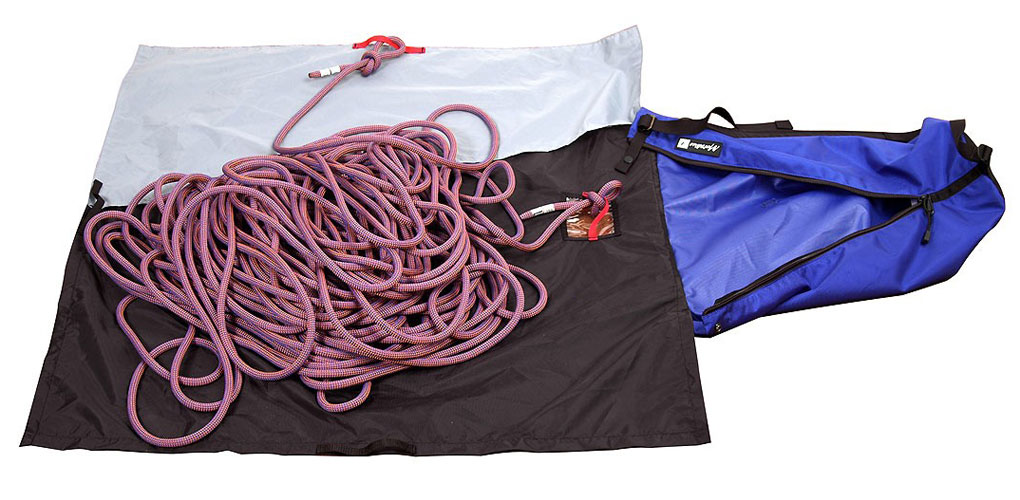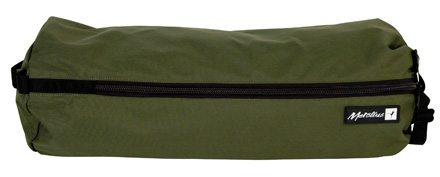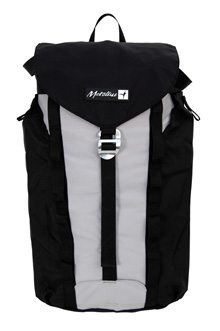Products: Metolius Rope Bags
Features:
- Easy-load “tarp pocket” controls rope while packing
- Durable plastic window lets you see into rope bag and identify which rope is in the bag
- Burly ballistic fabric
- Padded shoulder strap
- Molded carry handle
- Enough capacity for 70 meter ropes
- Drawcord closure eliminates grommet failure
- 3’x 3′ (1 m x 1 m) tarp
- 1210 cu. in. (20 L)
- 13.9 oz. (389 g)
- Colors: storm, rust, spruce
MSRP: $30
Features:
- A rope bag/rope bucket/summit pack
- Top and front opening capability
- Heavy-duty center zipper for easy access
- Dual side pockets
- Hydration pocket
- 3’x 3′ (1 m x 1 m) tarp
- 1100 cu.in. (18 L) expandable to 1464 cu. in. (24 L)
- 1 lb 8 oz. (700 g)
- Color: black/grey
MSRP: $55
[Editor’s Note: After this review was published, we learned from Metolius that they will be increasing the size of the tarps in their rope bags for 2013, which will be available mid-January.]
I was a late arrival to the rope bag scene.
I had been climbing for years, and I failed to see the need for a rope bag that I would mostly likely use only for cragging. After all, couldn’t I just drape the coiled rope over the pack that I’m already dragging up the approach? It’s nice to have something to put my rope on so it’s not in the dirt, but my pack or jacket or whatever else seemed to work well enough. Besides, my cragging lines are generally workhorses to begin with; I’ve never really been interested in treating them like they’re made out of silk.
I finally caved under my desperation to find a way of preventing my two cragging ropes from getting horribly kinked. I’d heard the rumors that rope bags kink the rope less than coiling does, and I was at the limit of my patience with the rat’s nest that my ropes had become.
Dirt Bag
The first bag that I bought, a Metolius Dirt Bag, was a purchase that I gave little thought to. I figured that spending serious time and energy weighing the little features on all available options was like miring in indecision between two kinds of bottled water: how many differences could possibly exist between two products that I felt silly paying for in the first place?
At first, I was content with the Dirt Bag. After all, there are a number of good things to be said about it: at $30, it’s inexpensive (a quick search finds that only the Millet Mountain Accessories rope bag is marginally less at $28/€22), it’s made with extremely durable ballistic nylon, and the stitching is well constructed. After a season of steady use, however, I began to notice and dwell on a number of things I didn’t care for.
 First, the tarp is a bit smaller that I want: 3ft. by 3ft. I see no reason for this. Tarps weigh almost nothing (not that we’re counting grams with crag gear anyway…) and don’t take up much room in the bag. If anything, I think tarps should be way bigger than necessary, not noticeably smaller.
First, the tarp is a bit smaller that I want: 3ft. by 3ft. I see no reason for this. Tarps weigh almost nothing (not that we’re counting grams with crag gear anyway…) and don’t take up much room in the bag. If anything, I think tarps should be way bigger than necessary, not noticeably smaller.
[Editor’s Note: for 2013, the tarp size will be increased to 58 x 52 inches.]
I developed the same opinion of the bag itself. My cragging ropes are 9.8mm x 70m. Not exactly floss, but at 9.8, hardly the bulkiest rope out there either. At those sizes, I have trouble fitting the ropes into the bag without neatly coiling them first to make them as small as possible. I bought a bag in the first place to eliminate coiling from my life, and instead I was not only coiling, but then wrestling with the bag’s zipper, which runs down the whole length of its side. If you use a 60m exclusively, you might not have this problem and might even find room to put your shoes or water or something in there with it (so I’ve read).
This has never been an option for me with my 70m, so I was always bringing up a second bag that contained harness, shoes, water, draws, etc. This makes the over-the-shoulder single strap design a big inconvenience. Carrying something over my shoulder when I have a daypack on is unwieldy at best, and awkward almost to the point of being dangerous if the approach involves any sort of scrambling.
I don’t mean to be too disparaging of the Dirt Bag—it’s a well-made bag that puts simplicity at a premium and is a good option if you’re looking for something on the cheap. Eventually, however, I decided that I needed something better suited for my needs. This time I did a little more research, went back into my local shop, and walked out with the Metolius Porta-Cord.


